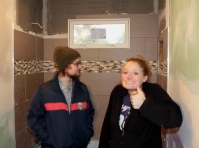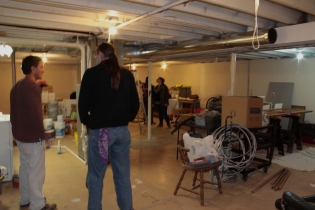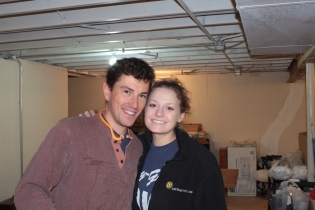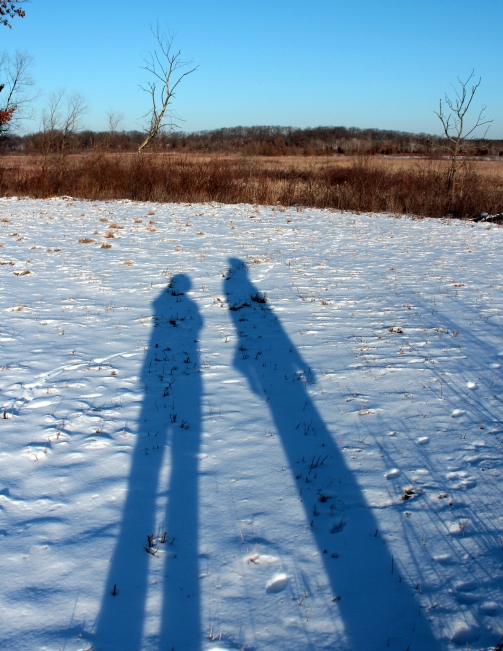Look! Up in the sky! It’s a bird…it’s a comet….it’s ATMOSPHERE!
The second gift in my December calendar of counting blessings is air. The blog entry I posted two years ago is about an encounter with duck hunters. Ironically, I met a duck hunter yesterday. He came into my daughter’s home with a mallard drake dangling from his fist, took it out to the back yard, and began to pull back skin and feathers to reveal a dark red breast. If you’ve never eaten duck, this may conjure a shocked response. If you have (and enjoy it as much as Steve does), you may shrug your shoulders and think, “Okay, that’s how we get duck meat. Yum!” My daughter came into the house minutes later with a collection of feathers in a plastic bag and announced, “Everyone’s getting feather earrings for Christmas!” My daughter makes and sells jewelry. Her designs are beautiful, I think.
So, natural resources…we use them, we share them with everything on the planet. We breathe something like 19 cubic feet of oxygen each day. Our air quality affects every breath we take, every bird and animal and plant as well. There’s an air quality exhibit at Discovery World where I work, so I am reminded of this several times a week. We will use the resources; we will affect the web. The question we must continue to ask is “How?” Are we mindful? Respectful? Wasteful? Grateful? Entitled? Do consider before acting.
Now, the reblog…
Make Way for Duck Hunters
I’m new around here. To Wisconsin, that is. People here shoot animals at state nature areas. And the DNR is okay with this. They post helpful signs that indicate which recreational activities are allowed and that includes the hiker dude whom I recognize, and a hunter dude whom I don’t. Well, I recognize him now. I’ve been seeing more of him lately. He’s up there next to the binoculars. I can’t figure out how all these things coexist, though. If you’re in a wildlife refuge area to view wildlife and hike around, and other people are there to shoot at the wildlife, what’s the etiquette for getting along?
Steve and I walked in the Vernon State Wildlife Area on Wednesday. This was our fourth visit. We’ve seen so many different kinds of animals there: birds and frogs and turtles and fish and muskrats. I wanted to see how the place was changing with the season. We walked down the gravel trail alongside the railroad tracks and heard 3 shots. When we got to the other parking lot, we saw 4 pickup trucks with gun racks. One of them had a sticker that said, “P.E.T.A. – People Eating Tasty Animals”. Gun deer season was just over, I thought. We walked out on the dike and saw decoy ducks on the water in several different places. As we got nearer, people in camouflage gear appeared in the cattails. I had my binoculars and my camera. They had guns and a dog. Steve and I were talking in low voices, wondering to each other, actually, what the protocol was for this seeming conflict of interests. Were the hunters harboring ill will for us, thinking that we were maybe scaring away the ducks and geese? Were we harboring ill will for them, thinking that they are killing the wildlife we’ve come to enjoy? Were the water birds harboring ill will for all of us, wishing we’d just let them be? We nodded greetings. At one point, some birds flew over in formation while the hunters tooted away on their duck call devices, but apparently, they were too high up to shoot. If they were any lower, would they have shot anyway, while we were standing there on the path?? I just don’t know how this is suppose to work. Are we supposed to stay away during hunting season? It’s not posted that hikers can only be there on certain dates. We heard shots as we walked back to our car.
I’m still puzzled about this. I have heard a few more stories from folks I’ve met about deer hunting. People have great family memories about hunting traditions. I imagine my favorite postal employee out there in the field, waiting 8 hours to spot a deer, and I suppose it’s kind of like fishing. You get to sit quietly in nature and forget about business at the post office. No one bugs you for hours at a time. And if you see a deer, you aim and shoot. If you hit it, you get to be all physical and field dress it and carry it away. Sounds like a complete departure from stamping packages all day long. I appreciate that.

As if Andy Goldsworthy had been here
There’s a particular stark beauty in the late fall landscape. Trees are skeletal. Light is low and angled. Ice forms in geometric patterns. It’s rather post-modern feeling. It makes me moody. So does the hunting scene. In a way, it fits, though. I guess I’m coming to a kind of ambiguous acceptance of it. Survival, mortality, an uneasy coexistence with everything. In the summer, this same drama is played out, except it’s covered in fecundity and green light.
Still, the universe is a complicated tapestry, as Steve said last night – a magic carpet stretching in all directions forever. I look for a perch from which to see as much of it as I can.





































